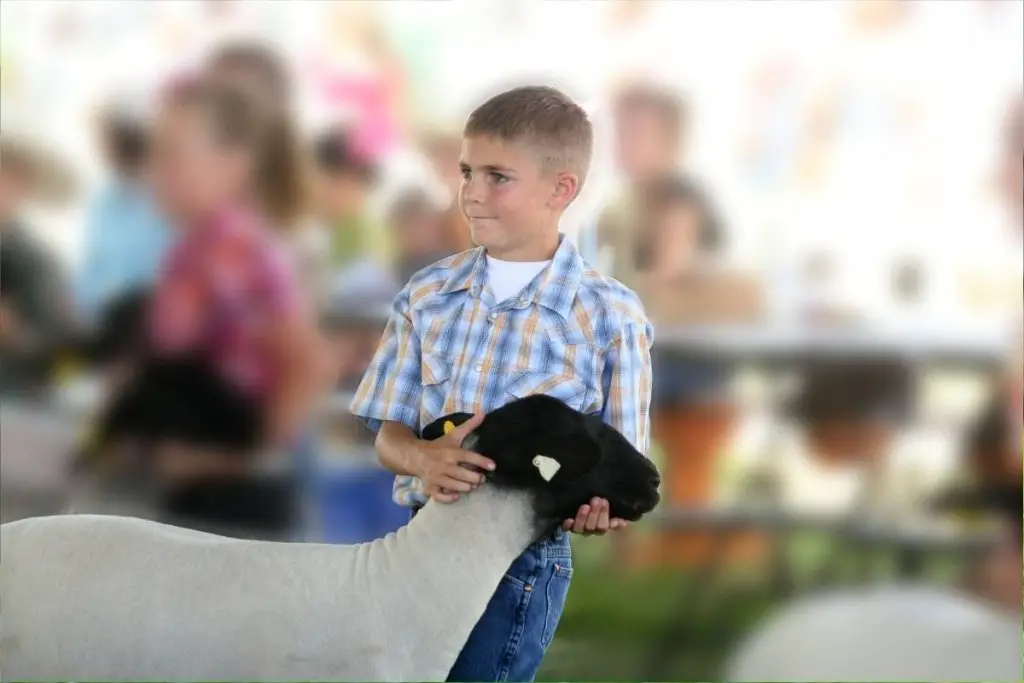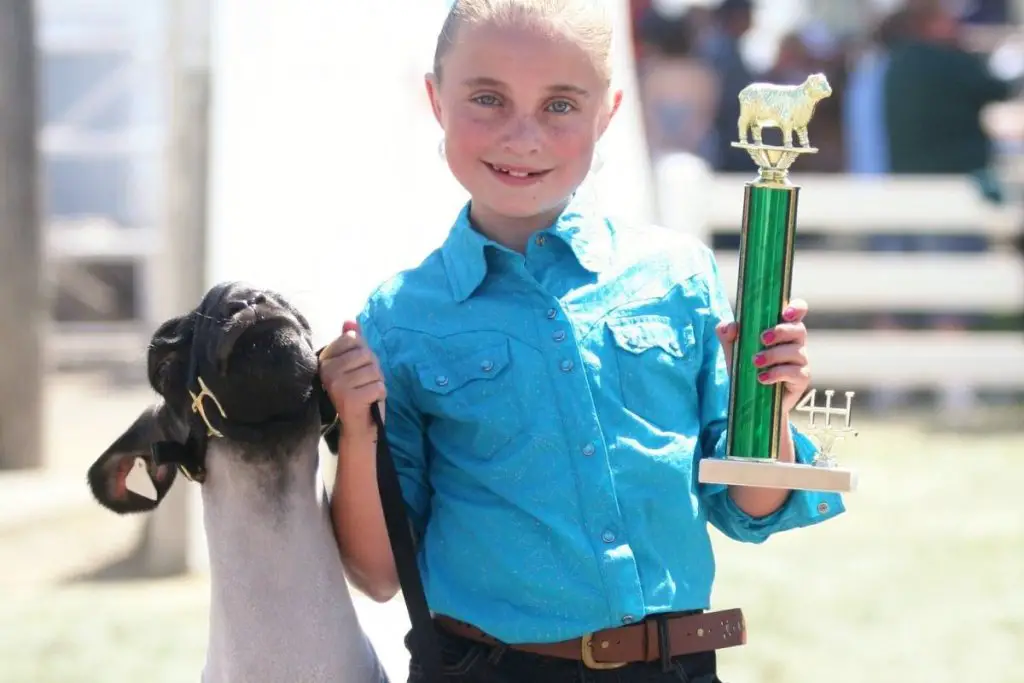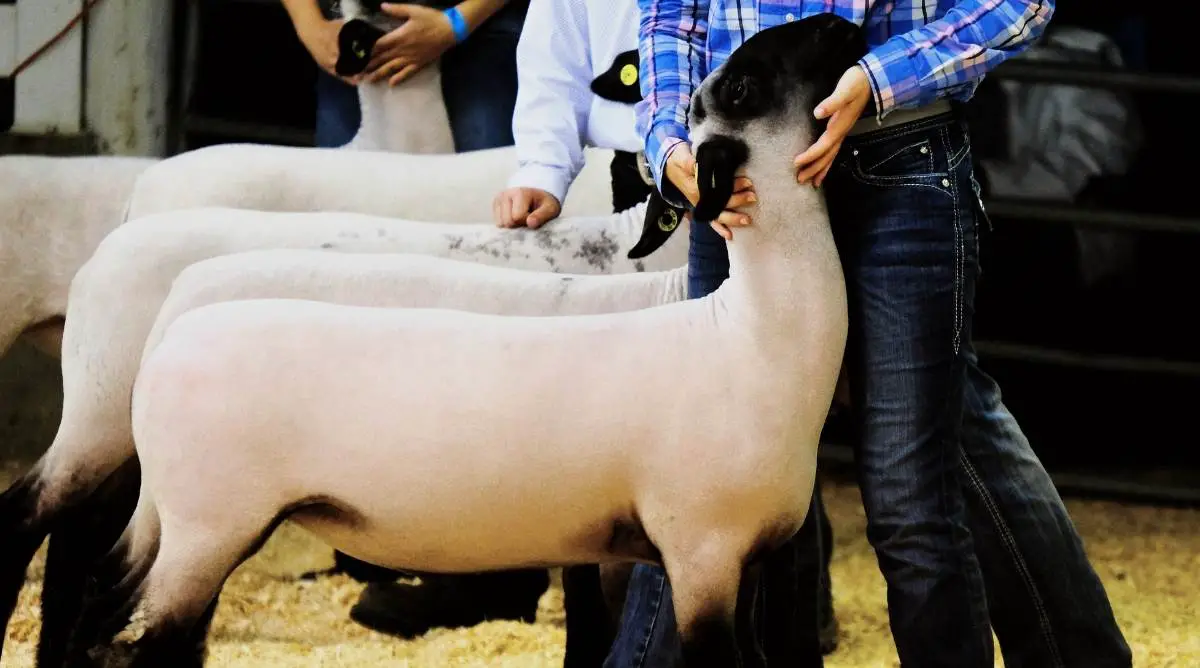You can start showing sheep by selecting the best sheep from your flock. Examine its physical condition and musculature, and then train it at home to allow it to get used to you leading it. On the day of the show, make sure to groom your sheep thoroughly, follow proper etiquette, and practice good showmanship.
Table of Contents
How to show sheep
Showing sheep is all about presenting your animals in the best light. Here are five important steps:
- Pick the right breed to show. According to the Show Lamb Selection Guide Mississippi State University for Agriculture and Applied Science publication, hair sheep breeds such as Katahdin and Dorper are common show lambs. Dorset, Suffolk, Hampshire, Shropshire, Oxford, and Crossbreds are also popular show sheep breeds.
- Inspect your sheep. Your sheep is good enough to show if it has good potential in terms of a large frame and long neck, body, and cannon bone. Compare it against the breed standards and look at winners from past shows to get an idea if your animal is suitable for a livestock show.
- Sign up for a sheep show. For instance, you might be interested in a junior or a 4-H sheep show. Make sure to follow the schedule and check in on time.
- Prepare for the sheep show. You get your sheep ready by grooming (shearing/trimming the fleece, hoof trimming and polishing, and washing/brushing). Keep in mind that preparation depends on the sheep breed. Wool breeds such as Rambouillet, Columbia, and Targhee shouldn’t be washed, and wool breed breeding sheep shouldn’t be shorn either.
- Day of the show. Showing up on time is essential. Getting your sheep ready just before the show includes: brushing it, trimming its feet, and cleaning the fleece, muzzle, eyes, and ears.
Selecting the right sheep

A good show sheep should be healthy, clean, and a good example of its breed. The most desirable traits in a show sheep are:
- Firm, hard muscles
- Large rib cage
- Large, muscular loin area
- Proper leg, loin, and rump length
- Long, thick cannon bone
- Structural correctness
Sheep shows typically have specific breed, age, and gender classifications, so make sure to check the event requirements. For example, there can be junior, yearling ewe or ram, intermediate, and senior shows. Breed classes include finewools, finewool crosses, medium wools, and Southdowns.
How to prepare for a sheep show
At sheep shows, a judge compares your animal to the breed standard, including the finer points, and its posture.
Grooming your sheep to prepare them for showing depends on the breed. Wool breeds should not be shorn. Dock, chest, and wool tips should be trimmed. Long wool breeds are not washed.
Short wool breeds are sheared six to eight weeks before the show day and can be washed one week prior.
How to practice for showtime

Sheep showmanship consists of the animal’s physical characteristics, but also the showman’s ability to present the sheep in the best way.
You need to teach your sheep how to brace at home.
Here are some tips:
- The earlier you start, the better. If you have a show lamb, start practicing while it’s still small.
- Use nylon sheep halters for halter breaking. The nosepiece should be placed halfway between the sheep’s eyes and mouth. Start by halter training in small intervals, 10 to 15 minutes at a time.
- If you decide not to use halters, practice guiding your sheep with your hands. Your left hand should be under the animal’s chin, and not on its neck. Handle your lamb’s legs while you’re guiding it. Don’t pull the animal by the ears, but simply lead it with your hands.
- Train your lamb to stand correctly. During the show, the animal’s four feet should be touching the ground all the time.
What to do on the day of the show

When you sign up for the show, you’ll get all the necessary information about the schedule, classes, and rules.
- When your class is called, enter the showring. Lead the lamb from the left-hand side with your left hand under its chin and your right hand behind its ears. You can lift its dock to encourage it to walk.
- Line up for the judge in the straight position. Raise your lamb’s head, the nose pointed forward. The sheep’s front legs and rear legs should be square under its shoulders. The legs should always be closest to the judge, and the sheep should be kept between the judge and the showman. The judge observes the sheep from its right side, so you should be on its left side.
- When the judge approaches your lamb to handle it, they are checking its length, conditioning, thickness, and structure. Brace the lamb by placing your knee against its chest, with just a slight pressure to encourage the animal to flex the muscles while its head is held high.
- Pay attention to the judge, maintain eye contact, and follow the instructions you might be given during the show. You’re likely to also be asked questions about your sheep and the sheep industry in general.
What to avoid when showing sheep
During the show, follow showmanship etiquette and show good sportsmanship. Here are some things you shouldn’t do while showing lambs:
- Don’t chew a gum
- Don’t be late or too early
- Don’t be over or underdressed
- Don’t kneel while positioning your sheep.
- Don’t pick your lamb up and/or lift its front feet off the ground.
- Don’t block the judge’s view of your sheep. For example, placing your hand on the lamb’s back or base of its neck can block the view of its top.

